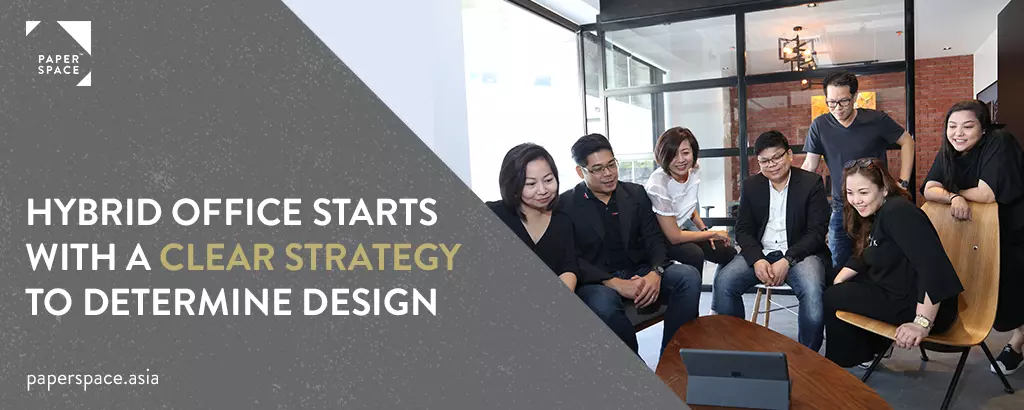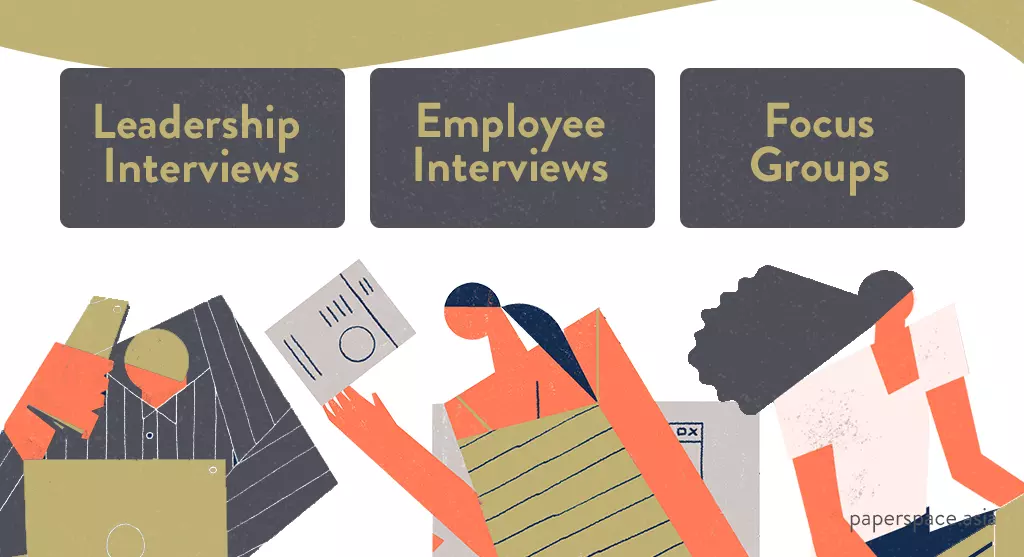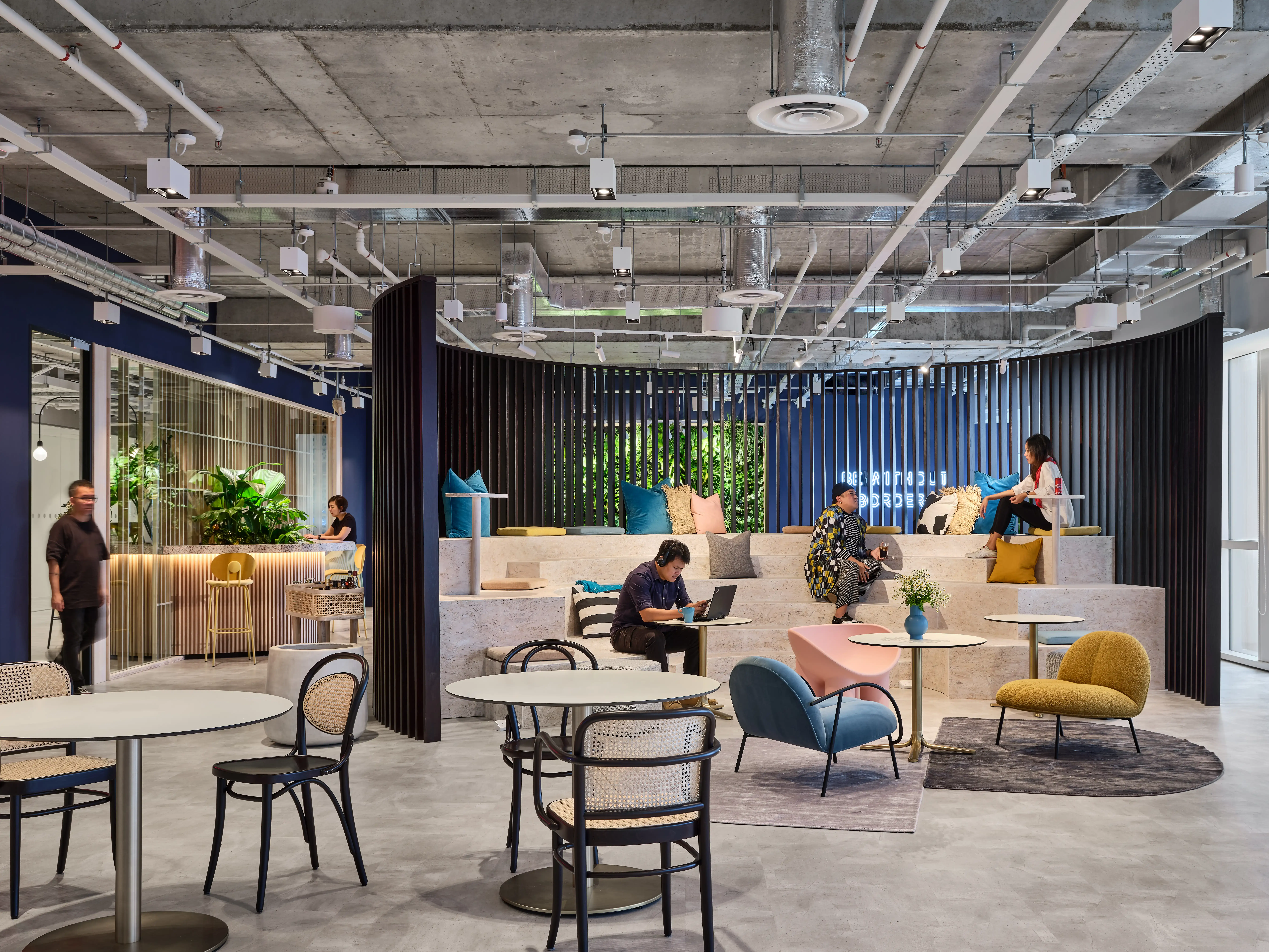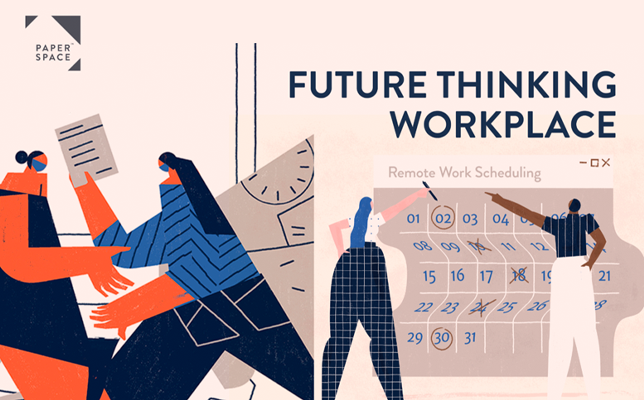Hybrid Office Starts With A Clear Strategy To Determine Design
27 May 2022
A challenge many organisations face centres around employees doing the majority of their work while confined in cubicle workspaces. Much of the workforce nowadays is leaning more towards a virtual, adaptable and collaborative approach and as such, traditional office spaces are slowly beginning to feel out-of-touch. Our research, however, has shown that physical offices are here to stay, which means there’s a growing need for a design overhaul.
It’s common for organisations who are looking to streamline their workplace and make full use of the spaces to jump straight into redesigning their offices by changing the layouts, furniture and the paint colour on the walls without fully understanding the needs and priorities of their company — and pay quite significant sums for it. However, making physical changes alone is not enough to satisfy the demands of today’s workforce. To succeed, you need to have a Workplace Strategy in place to ensure the changes you’re about to make to your office deliver the kind of environment, behaviours and culture you want for your organisation.
Avoid restricting your strategy by limiting yourself to a leadership-only perspective. To create a workplace that is conducive to productivity and collaboration, and attracting and retaining talent while remaining sensitive on cost, you will need to understand your business’ overall goals and the work culture that fuels your organisation.
What Is An Effective Workplace Strategy?
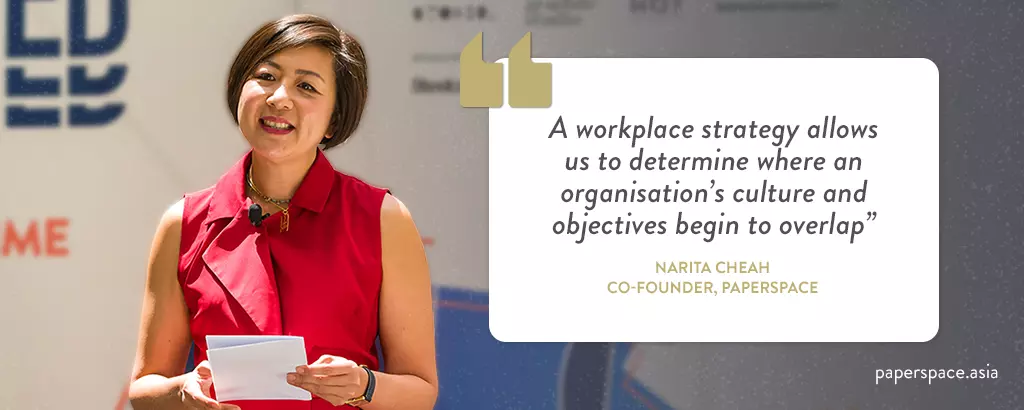 “A workplace strategy allows us to determine where an organisation’s culture and objectives begin to overlap” – Narita Cheah | Co-founder, Paperspace
“A workplace strategy allows us to determine where an organisation’s culture and objectives begin to overlap” – Narita Cheah | Co-founder, Paperspace
A workplace strategy links an organisation’s operational processes with the physical environment. When these factors are aligned, it paves the way for an organisation to achieve not only its business goals, but its culture, and people strategy too.
Developing a workplace strategy demands thorough analysis, study, and evaluation of your existing workplace culture vs. the culture you want to evolve. This is because each company has its own unique brand, some aim for innovation while others focus on efficiency. A clear workplace strategy is about being forward thinking and anticipating future needs while meeting the demands of today.
Why do you need a workplace strategy? Well, the benefits speak for themselves. A workplace strategy allows you to:
- Attract new talent while keeping existing employees happy with a work environment built with them in mind.
- Create a framework for achieving future smart organisational changes.
- Forecast potential external uncertainties and plan for their eventuality.
- Support broader business objectives and goals while keeping your workforce motivated and productive.
Workplace Strategy – The Paperspace Way
Norton Rose Fullbright is a global law firm that houses over 3,500 employees across Europe, the United States, Canada, Latin America, Asia, Australia, the Middle East and Africa. It is an organisation that prioritises professionalism through their industry experience, and one that sought to create a sense of belonging and comfort where people can bring their whole self to work, true to vision.
Their office at the time, however, struggled to reflect that due to its narrow corridors, lack of collaborative spaces and greatly underutilised meeting rooms. Paperspace was brought in to streamline and improve employee work culture by balancing privacy and openness to facilitate a congenial hybrid environment.
Paperspace designed a semi-open workplace that maintains employee privacy while giving them a view of the office. Smaller collaborative spaces were introduced to encourage small team meetings for employees to get comfortable with mutual and beneficial interactions with one another.
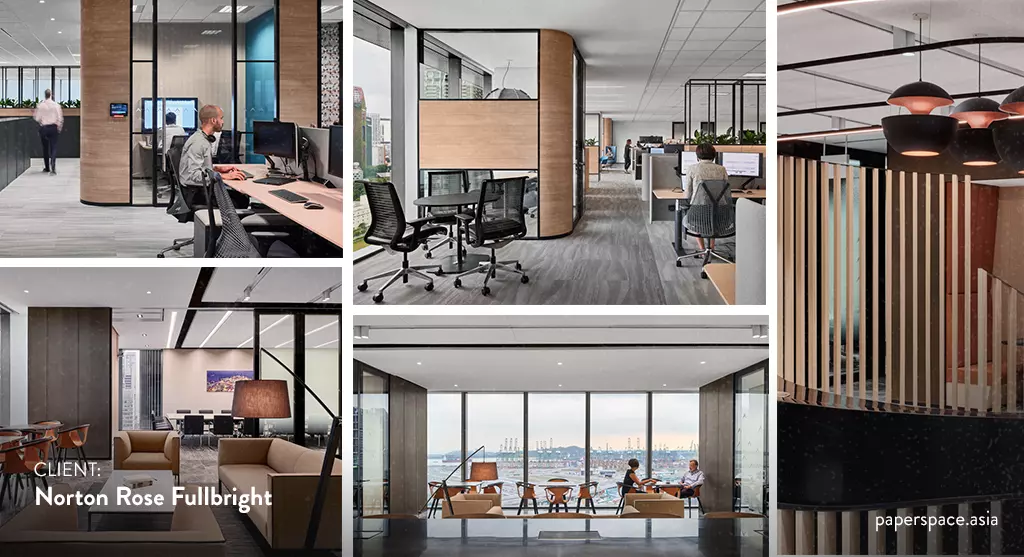
How do we do it?
We work with our clients in developing their workplace strategy by doing an initial assessment of their business objectives, existing workplace culture and style, and impressions of current work arrangements. In order to address the priorities and constraints of a company’s needs, Paperspace employs the use of these activities to determine the company’s trajectory:
- Leadership Interviews – We seek to realise where the company is headed in the future and how current work culture is or could be contributing towards that.
- Employee Interviews – Once we have understood the company’s vision, we seek to understand what the optimal work environment and methods are for every department
- Focus Groups – We host in-person workshops to truly understand how employees go through their day-to-day work. Predetermined metrics are used to gauge the most effective spaces to implement for departments to work at their most effective.

As experts in workplace strategy and design, Paperspace assists in the change required for companies to adapt to a hybrid model to satisfy the needs of an ever-changing and fast paced work environment. Our consultancy services span from workplace strategy and change management, right through to office design and delivery, all achieved through the power of our collective. Hybrid offices are built on the goals you set for your business, from there we help you set a clear strategy to help you reach those goals and to ensure any change you implement is effective and fruitful.
If you are new to hybrid office, feel free to learn more on what is a hybrid office and benefits of hybrid office. Or find out more about what we do here.
TAGS
join our newsletter
Subscribe to receive the latest updates and news on design,
workplace strategy and research into your inbox.

